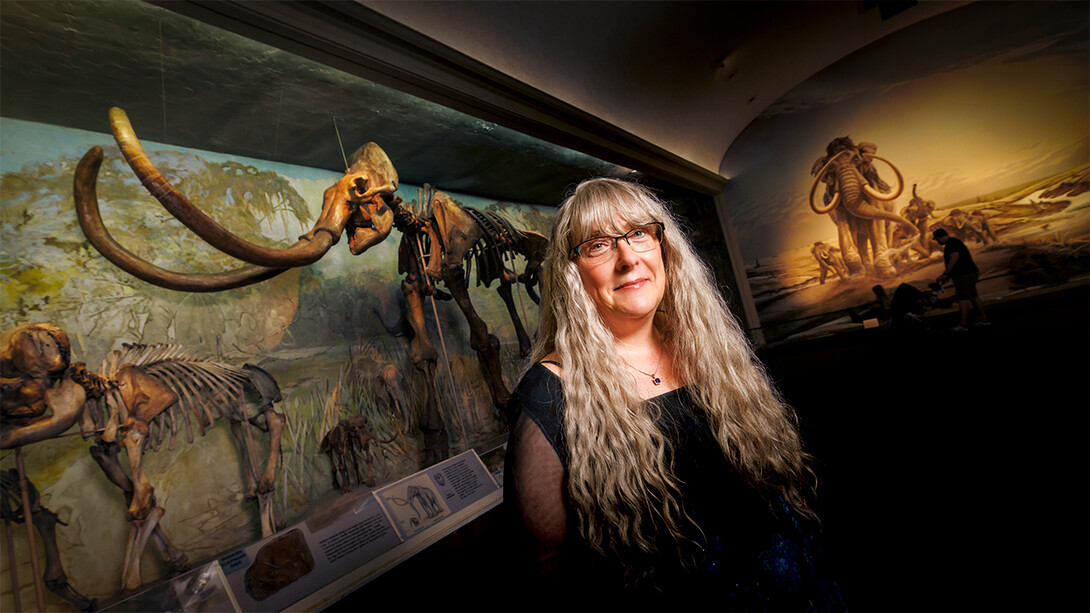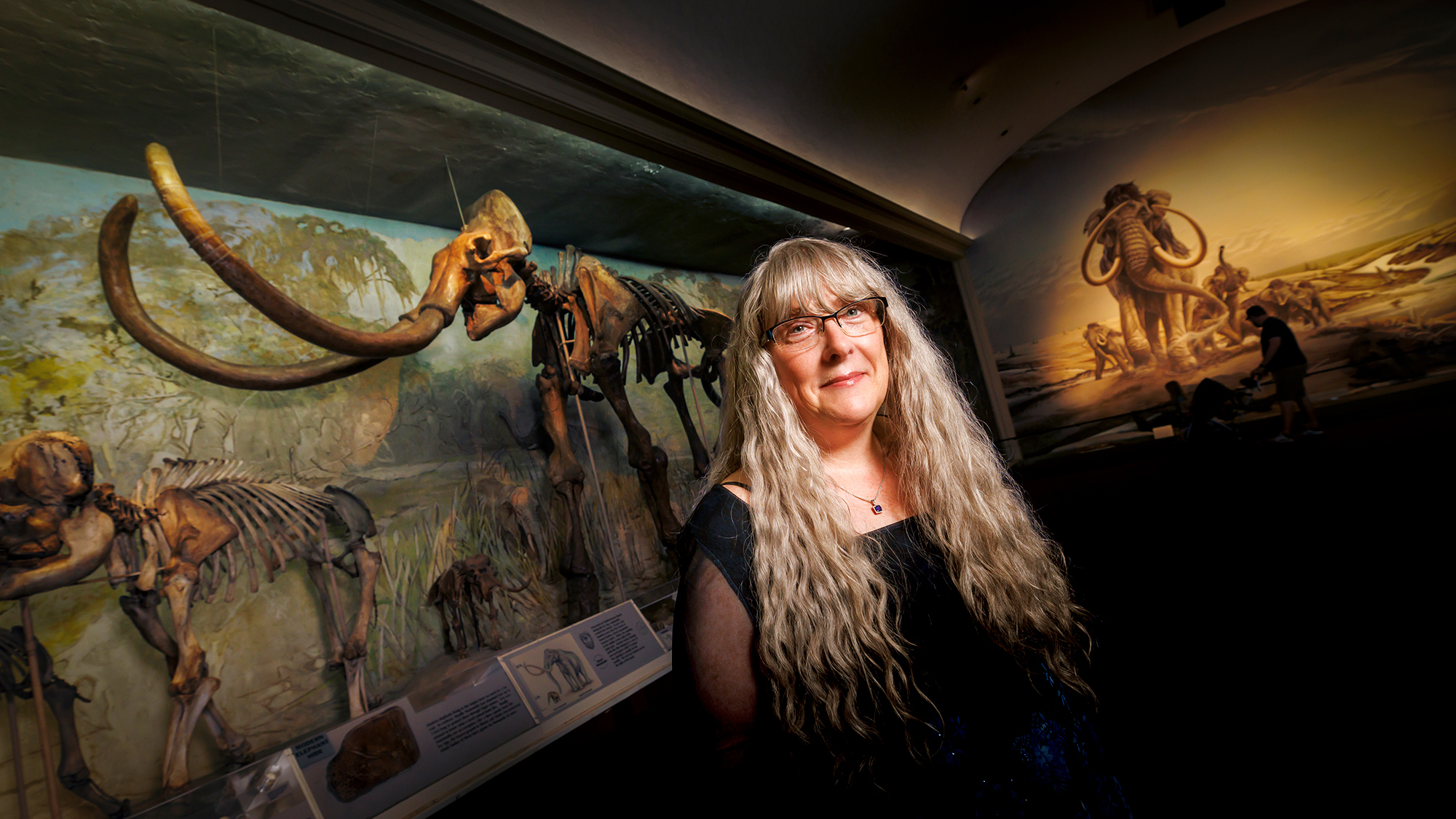
Whether by the spear or the plow, humans have been homogenizing the mammal communities of North America for 10,000-plus years, says new research led by the Canadian Museum of Nature and the University of Nebraska–Lincoln.
The museum’s Danielle Fraser, Nebraska’s Kate Lyons and international colleagues conducted an analysis of 8,831 fossils representing 365 mammal species from 366 sites across North America. Relying on those fossil records allowed the team to assess homogenization: the degree to which the specific mammal species in one ecological community match up with those of its surrounding communities, so that few species are unique to one community or another.
A few prior studies — those examining North American mammals from tens of millions to millions of years ago — generally pegged climate as the primary culprit of the homogenization and heterogenization they uncovered. Other research, focusing on just the past century to last few decades, has chronicled the recent human influences of land conversion, poaching and territorial encroachment.
But no team had established a baseline of homogenization, or the true magnitude of human contributions to it, by examining the phenomenon both before and after the arrival of Homo sapiens. So Fraser, Lyons and colleagues trained their attention on the past 30,000 years, a timespan encompassing the absence of Homo sapiens on the continent, their migration throughout it, and their shift from hunting-gathering to intensive agriculture.
Homo sapiens, the team found, are probably most responsible for the unprecedented rates and levels of homogenization seen in North American mammal communities — for flattening their distinctive character by escalating the similarity among many of them.
“Our conclusion is that this does have to do with early human activities and the arrival of humans into the Americas,” said Lyons, assistant professor of biological sciences at Nebraska.
North American mammal communities of the modern day are more than twice as homogenous as they were roughly 10,000 years ago, the study revealed. That shift, the researchers said, is equivalent to the current difference in homogenization between the subtropics of central Mexico and the comparatively uniform mammal communities of the Arctic.
The trend emerged earlier and was especially pronounced among mammals weighing at least 1 kilogram, or 2.2 pounds. Also telling? Homogenization began accelerating about 12,000 years ago, around the time that humans were hunting mammoths, saber-toothed cats, dire wolves and other large mammals to extinction.
Together, Lyons said, those findings suggest that the spate of large-mammal extinctions contributed to homogenization. The disappearance of large mammals unique to individual communities would have directly increased their similarity, she said. And in a 2019 study, Lyons and colleagues showed that those extinctions also drove smaller species to expand their ranges, filling the geographic voids left by their larger counterparts. Expansion would have led to more territorial overlap, Lyons said, further homogenizing communities in the process.
But homogenization in North America accelerated even more in the past 5,000 years — a span marked by as much as a 10-fold surge in the human population and the emergence of widespread farming, particularly across what would become the central and eastern United States.
“It happened much later in North America than on other continents,” Lyons said. “But that’s really when humans in North America went from being hunter-gatherers to being more settled and dependent on agriculture.”
The proliferation of human settlements across the continent attracted mammal species — coyotes, raccoons, rats and other rodents — that would come to thrive on the byproducts of those settlements and enjoy the elimination of predators by the people inhabiting them.
The conversion of prairies and forests for agriculture, meanwhile, shrunk the number of plant species in a given habitat from hundreds or thousands to mere dozens or fewer, narrowing the habitable territory for pickier herbivores and the carnivores or omnivores preying on them. Cultivated fields, roads and other human-created boundaries would also have acted as “barriers to dispersal,” Lyons said, that likewise hemmed certain species into smaller territories.
“You still have narrow-ranging species, but now they’re in fewer communities, so their overall contribution to the difference in communities is much smaller than maybe it was before,” Lyons said.
As for the potential effect of climate? The team found scant evidence for it between 10,000 and 500 years ago. From about 20,000 to 15,000 years ago, a warming North America saw the retreat of glaciers that had enveloped nearly all of modern-day Canada and much of the northern United States. Warmer climates generally yield more gradual north-south gradients in temperature and precipitation. That warming-driven homogeneity in climate, Lyons said, tends to breed homogeneity in mammal communities, too.
If climate had contributed to the homogenization of mammal communities, the team would have expected that homogenization to accelerate prior to 10,000 years ago. The fact that it didn’t indicates that climate probably had little to do with it, she said.
“What we find when we look at the climate patterns is that all of that happened very early on, before we see this dramatic homogenization,” Lyons said.
For all the speed and severity of homogenization throughout the past 5,000 years, it has only increased in the past 500, the team concluded. To the extent that it is stemming from the continued extinctions of keystone species whose behaviors and capabilities are especially consequential, that homogenization could spell danger for ecosystems, Lyons said.
“A lot of what we’re finding is that when we lose species — particularly when we lose large species that tend to be what we call ecosystem engineers — there’s a dramatic change in the ecosystem that’s left,” she said. “Large mammals do all kinds of stuff in ecosystems.
“Elephants eat a lot, they move around a lot, and they poop a lot, so they actually move nutrients around ecosystems a lot. What we’re finding, then, is that nutrients essentially get lost from ecosystems (in their absence).”
With fewer keystone species, homogenized mammal communities may also boast fewer ways to respond, and possibly survive, the ongoing challenges of climate change and further human encroachment, Lyons said.
“Communities will be probably less resilient to future perturbations and potential extinctions,” she said. “It also just makes the world less interesting, because you have less wondrous variation out there.”
The team reported its findings in the journal Nature Communications. Fraser and Lyons authored the study with Alex Shupinski, doctoral student in biological sciences at Nebraska; Amelia Villaseñor from the University of Arkansas; Anikó Tóth from the University of New South Wales; Meghan Balk of the Battelle Memorial Institute; Jussi Eronen from the University of Helsinki; W. Andrew Barr of The George Washington University; A. K. Behrensmeyer, Gary Graves, Richard Potts and Laura Soul, from the Smithsonian Institution; Matt Davis from the Natural History Museum of Los Angeles County; Andrew Du of Colorado State University; J. Tyler Faith from the University of Utah; Nicholas Gotelli from the University of Vermont; Advait Jukar of Yale University; Cindy Looy from the University of California, Berkeley; Brian McGill from the University of Maine; Joshua Miller from the University of Cincinnati; Silvia Pineda-Munoz of Indiana University.
The researchers received funding in part from the National Science Foundation and the Smithsonian Institution.








